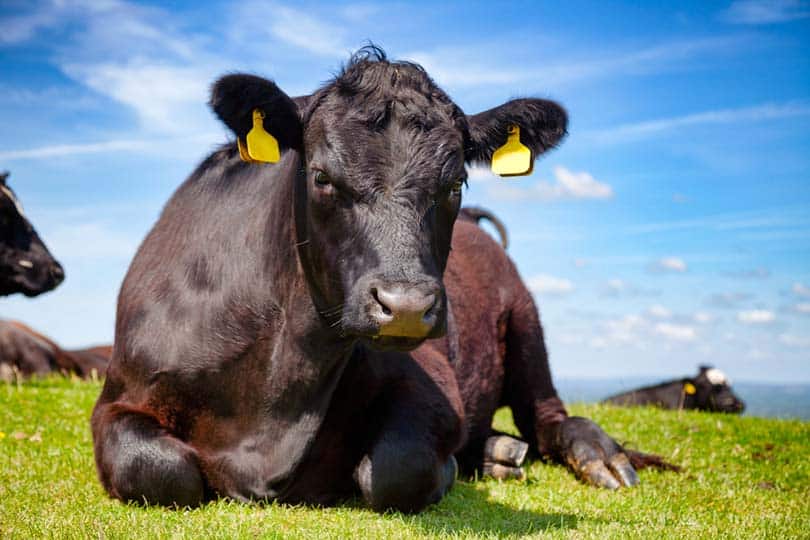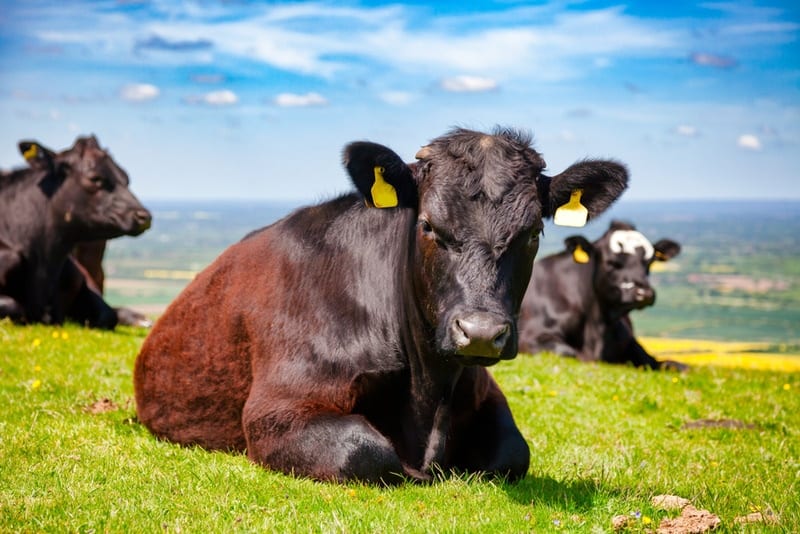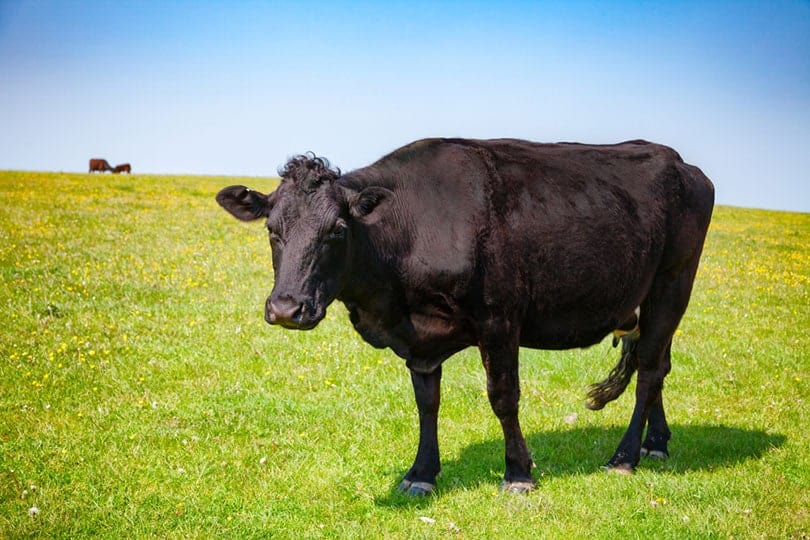If you’re like most people, you probably think of cows as big, lumbering animals that spend their days out in the fields chewing on grass. But did you know that there is a breed of cow known as the Sussex cattle that are quite different?
Sussex cattle are medium-sized and agile, and they are used for a variety of purposes. In this article, we’ll take a closer look at Sussex cattle, including their history, physical characteristics, and uses.

Quick Facts About Sussex Cattle
| Breed Name: | Sussex Cattle |
| Place of Origin: | Southeastern England (Sussex, Surrey, Kent) |
| Uses: | Draught, meat, milk |
| Bull (Male) Size: | 1,000 kg |
| Cow (Female) Size: | 677 kg |
| Color: | Red, brown, white |
| Lifespan: | 10–15 years |
| Climate Tolerance: | Great |
| Care Level: | Easy |
| Milk Production: | Good |
Sussex Cattle Origins
The Sussex cattle breed originated in the county of Sussex in England, hence its name. The first documented mention of Sussex cattle dates back to as early as 1066, in the Norman invasion of England.
The Sussex breed was created by crosses between native British cattle and Swedish stock imported into England. The resulting cattle were well-suited to the Sussex climate and terrain, characterized by chalk downlands and mild winters.
The breed was seriously developed in the 1800s when breeders favored the deep red coloration, fine hides, and great beef quality.
Since the Sussex cattle are an ancient breed, it is often preserved for genetic quality in modern breeding.

Sussex Cattle Characteristics
Sussex cattle are medium-sized animals, with cows weighing between 1,000 and 1,200 pounds and bulls weighing between 1,500 and 2,000 pounds. They are generally red or red with white markings, although some Sussex cattle may be completely white.
One of the most distinguishing features of Sussex cattle is their long, slender head, which is often described as “fox-like.” Sussex cattle also have long, thin legs and a deep body.
In terms of temperament, Sussex cattle are known for being docile and easy to handle. They are also relatively long-lived, with cows often producing milk until they are 10 years old or more.
The breed is hardy, heat-tolerant, and efficient at foraging in habitats with poor feed quality.
Uses
Sussex cattle are used for a variety of purposes. Because of their size and temperament, they are well-suited for both dairy and beef production. Sussex cows typically produce 2,000 to 3,000 pounds of milk per year. The milk is high in butterfat, making it ideal for use in butter and cheese production.
In addition to their dairy qualities, Sussex cattle are also used for beef production. The meat is lean and flavorful, and because Sussex cattle grow relatively quickly, they can be ready for slaughter at a younger age than other breeds.
Finally, Sussex cattle are sometimes used as draft animals. Because of their strength and endurance, they can be used for a variety of tasks, such as plowing fields and pulling carts.

Appearance & Varieties
As we mentioned earlier, Sussex cattle are usually red or red with white markings. However, there is also a variety of Sussex cattle known as the “Red Poll” that is completely red. In addition, some Sussex cattle may have black patches on their coats.
While most Sussex cattle are used for either dairy or beef production, there is also a variety called the “Oxford Sandy and Black” that is specifically bred for oxen. These animals are black with white markings, and they are larger and heavier than other Sussex cattle.
Population/Distribution/Habitat
Sussex cattle are found throughout the world, but they are particularly common in England, where they were originally bred. In recent years, Sussex cattle have also been introduced to Australia and New Zealand.
When it comes to habitat, Sussex cattle are relatively adaptable and can be found in both pastureland and wooded areas. However, they do best in areas with mild winters and ample rainfall.

Are Sussex Cattle Good for Small-Scale Farming?
Yes, Sussex cattle are a good choice for small-scale farming. They are relatively easy to care for and can be used for both dairy and beef production. In addition, Sussex cattle are relatively adaptable and can be found in both pastureland and wooded areas.
If you’re thinking of adding Sussex cattle to your farm, be sure to check with your local extension office or agricultural department to see if they are well-suited to your climate and terrain.
Featured Image Credit: Dmitry Naumov, Shutterstock
